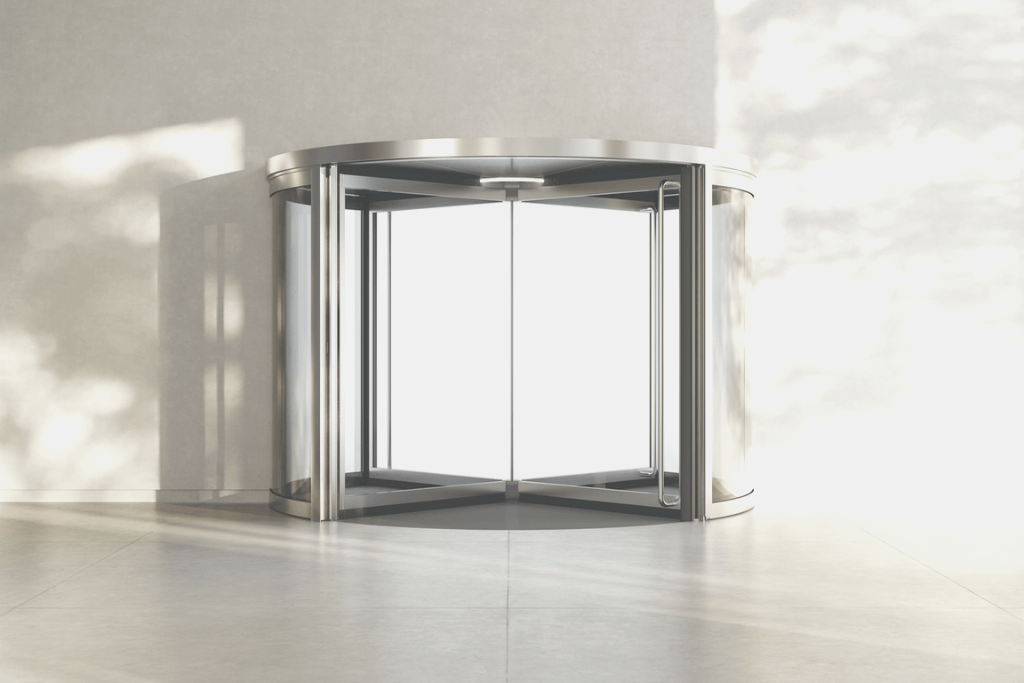Thanks to the rising interest in modern access technologies, the global market for automatic doors has been growing in more than 15 countries. China, with over a billion inhabitants, towering buildings, and thousands of shopping malls, is the world’s largest market for the sale and installation of automatic pedestrian doors. Europe installs up to 140,000 doors per year, shortly followed by the United States with 100,000. In France, the volume of doors installed varies between 20,000 and 25,000 per year.
An automatic door confers many advantages to both the operator and the user, especially if it’s manufactured in compliance with strict standards and regulations, including work code, fire safety, accessibility, burglar-proofing, and energy savings. Nevertheless, following years of usage, it might still be necessary to replace it for the following reasons.
1. Decreased Performance of Existing Doors
Since 2012, automatic doors, whether swinging, sliding, or revolving, have been subject to the European safety standard EN 16005. This standard is applicable to all locations, and its safety requirements have been increased. Simple cell barriers that don’t provide sufficient safety or the type of old doors that suddenly shut when someone passes by are no longer ubiquitous.
Therefore, it’s necessary to replace obsolete equipment to ensure safety and comfort of use. In such cases, the motor may also lose power and no longer allow the door to open or close. As the reduced performance of openings can have real impacts on office or commercial activities, it’s ideal to replace the old models with newer, more powerful motors.
After this upgrade, it’s advisable not to neglect the quality of the installation or its maintenance.
2. Building Renovations
Renovation work is one of the reasons why users change their automatic doors. If a building ages, changes ownership, or its function purposes, such as a switch from an office building to a residential one or vice versa, it might be time for an upgrade to an automatic sliding door, a revolving door, or a swing door. This way, the new door can meet the new requirements for opening and managing the flow of visitors.
The choice of the door may also be conditioned by the requirements of the architect, who may request the installation of a revolving door for aesthetic reasons, for example. The door chosen should enhance the overall appearance of the building.
3. Modernization of Entrances
One of the easiest ways to modernize a building is by installing entrance systems that comply with current standards and provide innovative features such as mobile access.
There are many possible reasons to do so. For instance, if the door is equipped with a swing door automation system, system operators might want to replace this system with a sliding door.
Improving the aesthetics, performance, and accessibility for people with limited mobility could also be another concern solved by modernizing the entrance systems, which automate entry and exit.
How to Choose an Automatic Door
When replacing an automatic door, it is necessary to ask the right questions:
- How does it open? Does it open by swinging, sliding, or revolving? It is important to consider the space available and the configuration of the room to be equipped. An automatic sliding door can be an economical solution if you are short of space. You can also install sensors above each entrance to monitor the occupancy rate of the building.
- What design features are desired? Do you want a swing, sliding, or revolving door? In this case, it’s possible to choose the door according to the dimensions of the area to be equipped. You can also take into account your taste and preferences such as finishes, comfort, acoustic or thermal performance, and burglarproofing.
- What are the accessibility requirements? Automatic doors comply with accessibility and evacuation regulations. It is up to you to choose the one (with its accessories) that best suits the place to be equipped.
- What’s the function of the building? Is it a commercial premise, a public place (ERP), an office building with many visitors, or a residential building?
- What’s the budget? Whatever the needs are, there are many options that meet all of them in terms of both safety and comfort.






